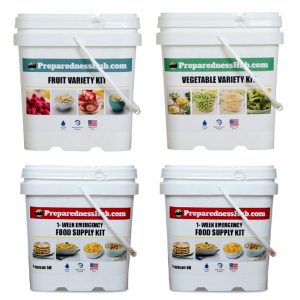 Milk prices may be at an all-time low but fruit and almond prices are expected to increase substantially due to another season of honeybee population decreases. Ordering bees to pollinate crops and to start new hives for honey-making is even more difficult this year than last.
Milk prices may be at an all-time low but fruit and almond prices are expected to increase substantially due to another season of honeybee population decreases. Ordering bees to pollinate crops and to start new hives for honey-making is even more difficult this year than last.
“It’s been stated that every third bite of food you take is thanks directly or indirectly to a honey bee,” said beekeeper Orin Johnson. The beekeeper is exactly right. Approximately 70 percent of all the food we eat was pollinated by honeybees. Feed devoured by the livestock we eat is also pollinated by bees. Keeping the junior high science lesson super short- if the bees die, the human race will not be far behind.
Honeybees in the California Central Valley always pollinate the fruit and almond trees which provide produce and nuts shipped around the world. The state literally requires billions of honeybees to generate a healthy and solid crop each year.
The vast amount of acreage devoted to the production of fruit and nuts puts a high demand on honeybees and will outweigh the supply in 2015. Some of the honeybees raised in California are also shipped to Idaho and North and South Dakota. The rental of beehives used to be a decent line to be in, but price increases to a tune of 25 percent, have made the honeybee rental gig big business – when you can find enough bees to fill the hive frames. Bee hive theft has also reportedly increased substantially.
To thwart would be thieves, both beekeepers and beehive renters have been forced to move their hives multiple times per year. Sadly, we could one day find ourselves in a scenario where he (or she) who controls the beehive business controls the world – or at least has a big chunk of the food supply and economy at their disposal.
To prevent a “he who dies with the most beehives wins” situation, we must focus more keenly on the curtailing the decreases in the honeybee population and determine once and for all what is causing colony collapse disorder.
Honeybees have been disappearing at an alarming rate since 2005. Honeybee population declines are developing as a major blow to farmers and gardeners – a situation that could lead to higher food prices. The 2013, colony collapse disorder statistics follows record losses of the little pollinators due to colony collapse disorder, a condition in which entire hives disappear or die.
“Bees are the primary link between us and the bounty of fruits and vegetables in our supermarkets. People don’t realize how important they are,” Byron Martin, the owner of Logee’s Nursery in Connecticut. said. “You don’t need a bee to get a head of broccoli or alfalfa. You do need bees to pollinate the mother plants that produce the seeds that grow those crops. People miss that connection.”
A 2014 Harvard study states that neonicotinoids – the dominant ingredient found in many popular insecticides which treat much of the corn in the U.S. — are to blame for honeybee colony collapse disorder. Honeybees provide pollination for 70 percent of the food we grow to eat. Bees don’t pollinate corn, but the pollen drifts elsewhere, where it makes contact with bees.
During a honeybee awareness event last year deemed a “Bee-In” by Whole Foods, the company released this excerpt:
“Imagine a world with no milk, yogurt, or butter. No cheese? No chance. Without pollinators, the dairy aisle would be a lot less plentiful. That’s why the Whole Foods Market Lynnfield store in Massachusetts demonstrated to shoppers how many of their dairy department favorites would cease to exist without bees. One of every three bites of food comes from plants pollinated by honeybees and other pollinators, and pollinator populations are facing massive declines.”
According to the Whole Foods Market review, without honeybee pollination of clover and alfalfa a 50 percent reduction in all milk-based products would also likely occur. Almond milk and fruit juices would also be among the items to disappear from grocery stores in honeybees are wiped out by biotech products, GMO crops, the nasty little varroa mite, or any other reason that has been touted for CCD by notable experts.
In 2013, Whole Foods engaged in a similar bee education project. While working on that endeavor the store found that 52 percent of products typically found in the product mixes aisle is also dependent upon pollination by bees. According to the studies reviewed during the experiment, about 85 percent of all the plant species on Earth either require or “strongly benefit” from pollination by insects.
The Harvard honeybee study was published in the Bulletin of Insectology. The university scientists studied 18 honeybee colonies in Massachusetts for about one year, and reviewed how even low doses of two types of neonicotinoids — clothianidin and imidacloprid — impacted healthy honeybee hives over the winter. They placed the hives in three locations, and at each spot gave four hives high fructose corn syrup laced with neonicotinoids and left two hives untouched. Half the hives that came into contact with the insecticide suffered colony collapse disorder. And the bees that were left were not doing great.
Professor Nigel Raine, from the Canadian University of Guelph, had this to say about the imidacloprid neonicotinoid and its impact on the birds and the bees:
“Exposure to this neonicotinoid seems to prevent bees from being able to learn essential skills. These tests [for lethal effects] should be conducted for extended periods to detect the effects of chronic exposure.”
The Environmental Protection Agency (EPA) and the United States Department of Agriculture (USDA) have long claimed that insecticides containing neonicotinoids are safe, but the Harvard study found otherwise. In the study, approximately half of the bee colonies which had been exposed to neonicotinoids died.

 Variety Sampler Kit 140 Servings
Variety Sampler Kit 140 Servings  4-Pack Bundle
4-Pack Bundle